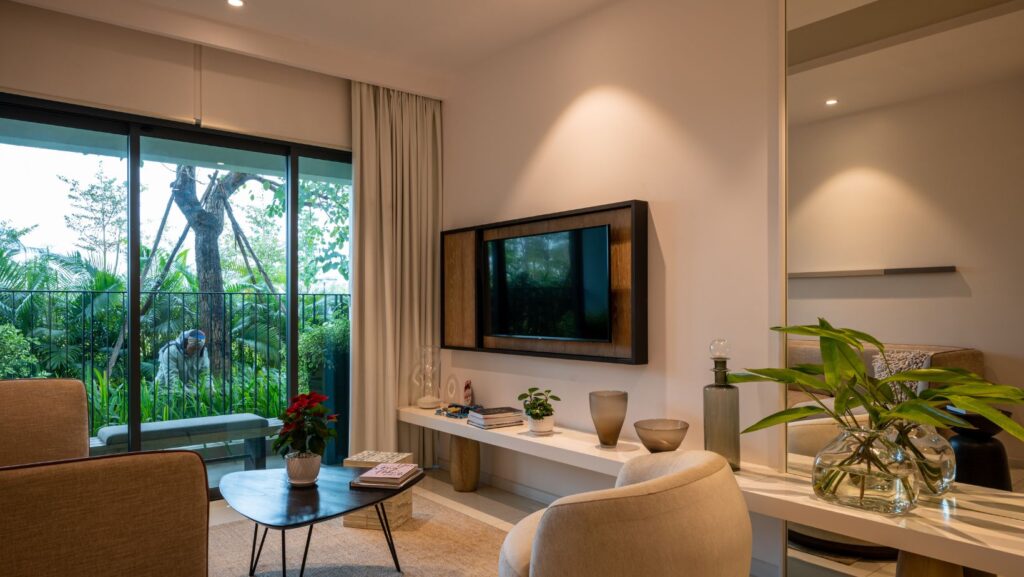Dimensions Of A 50 Inch Tv
Finding the right TV size can be a challenge, but a 50 inch TV is a popular option for many households. However, determining the dimensions of a 50 inch TV can also be a bit tricky as the dimensions can vary depending on the brand and model.
Generally, a 50 inch TV will have a width of around 44 inches and a height of around 25 inches without the stand. However, if you include the stand, the height of the TV can increase by a few inches. It is important to consider both the dimensions of the TV and the space where you plan to place it to ensure a comfortable viewing experience.
Another factor to keep in mind is the thickness of the TV, which can also vary by model. Some TVs may be slim with a thickness of a few inches, while others may be thicker with built-in speakers. The overall size and weight of the TV can also impact how easily it can be mounted on a wall or moved from room to room.
Understanding TV Dimensions
If you’re in the market for a new TV and are considering a 50 inch option, it’s important to understand the dimensions of a 50 inch TV. In general, the dimensions of a TV are measured from one corner to the opposite corner of the screen.
A 50 inch TV screen measures 50 inches diagonally, which means that the width and height of the screen are not 50 inches, but something less. The actual width and height of a 50 inch TV will vary based on the aspect ratio of the screen. Most 50 inch TVs have a 16:9 aspect ratio, which is standard for high-definition (HD) televisions.
With a 16:9 aspect ratio, a 50 inch TV will typically have a width of around 44 inches and a height of around 25 inches. These dimensions can vary slightly depending on the manufacturer and model of the TV.
It’s also worth noting that the actual dimensions of a 50 inch TV will be larger than the dimensions of the screen itself. This is because most modern televisions have a bezel, which is the frame around the screen that can vary in size. The thickness of the TV can also impact its overall dimensions.
In addition to understanding the dimensions of a 50 inch TV, it’s important to consider the space in which you’ll be placing the TV. Make sure to measure the area where you plan to put the TV to ensure that it will fit comfortably.
Overall, understanding the dimensions of a 50 inch TV can help you make an informed decision when it comes to purchasing a new TV. Keep in mind the aspect ratio, bezel, and thickness of the TV when comparing different models.
See our next article for more content like this!

When it comes to buying a 50 inch TV, there are several factors you should consider before making a purchase. One of the most important is the dimensions of the TV itself. Here are some things to keep in mind:
- Screen size: A 50 inch TV is measured diagonally from corner to corner. While this may seem straightforward, it’s important to remember that the overall dimensions of the TV will depend on the size of the bezel (the frame around the screen). Be sure to check the manufacturer’s specifications for the TV’s overall dimensions, not just the screen size.
- Aspect ratio: The aspect ratio refers to the ratio of the TV’s width to its height. A 50 inch TV may have an aspect ratio of 16:9, which is typical for most modern TVs. However, some older models may have a 4:3 aspect ratio, which will affect the overall dimensions of the TV.
- Stand vs. wall mount: Another thing to consider is whether you plan to use the TV stand or mount it on the wall. Wall mounting can save space and give your home theatre setup a sleeker look, but it’s important to make sure the TV’s mounting pattern is compatible with your chosen wall mount.
- Viewing distance: Finally, it’s important to consider the distance between the TV and your viewing position. For a 50 inch TV, you’ll want to be sitting at least 7 feet away for the best viewing experience. Be sure to measure your room to make sure you have enough space for the TV and comfortable viewing distance.
Overall, the dimensions of a 50 inch TV will depend on several factors, including screen size, aspect ratio, and whether you plan to use a stand or wall mount. By considering these factors and measuring your space carefully, you can choose a TV that fits perfectly into your home theatre setup.


 By
By 




